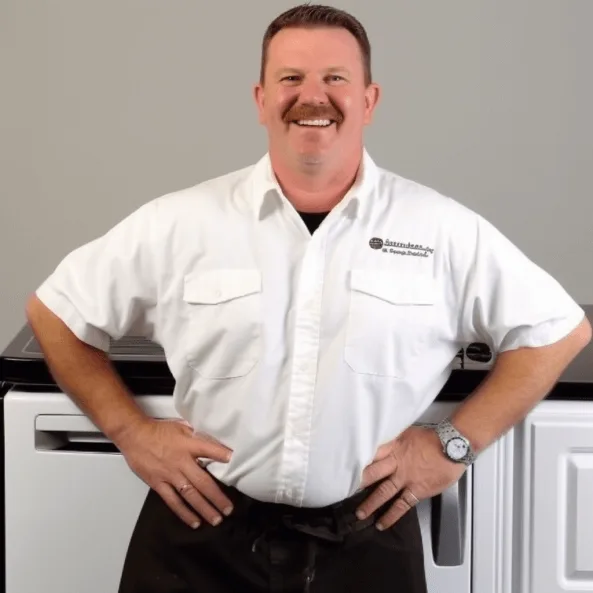Have you noticed water pooling around your water heater? A leaking inlet pipe can be a major headache, leading to costly repairs and potential water damage. You’re not alone; many homeowners face this frustrating issue at some point.
Understanding the causes and solutions for a leaking inlet pipe can save you time and money. In this article, you’ll learn how to identify the problem, what steps to take for a quick fix, and when it’s best to call in a professional. By the end, you’ll feel more confident tackling this common household challenge.
Key Takeaways
- Identify Common Causes: Leaks often stem from loose connections, corrosion, or wear and tear on the inlet pipe. Regular inspection can help catch these issues early.
- Recognize Warning Signs: Look for water accumulation around the water heater, reduced water pressure, or unusual sounds, as these can signal a leaking inlet pipe.
- DIY Repair Techniques: Tightening loose fittings, applying pipe sealant, and replacing damaged sections are effective DIY methods for fixing minor leaks.
- When to Call a Professional: If leaks persist after DIY attempts or if extensive damage is present, it’s essential to consult a professional plumber for expert assessment.
- Preventative Measures: Conduct regular maintenance, check water pressure, and ensure proper installation to avoid future leaks and prolong the lifespan of your water heater.
- Stay Proactive: By being vigilant and proactive with your water heater maintenance, you can prevent costly repairs and protect your home from water damage.
Understanding Water Heater Inlet Pipe Leaking
Water heater inlet pipe leaking occurs when water seeps from the pipe connecting your home’s water supply to the heater. This leak can lead to water pooling around the unit, causing potential damage and increasing your water bill.





Common Causes of Inlet Pipe Leaks
- Loose Connections: Over time, connections can become loose due to temperature changes and water pressure. Tightening these fittings can often resolve the issue.
- Corrosion: Metal pipes can corrode, especially if your water has high mineral content. Inspect the pipe for signs of rust or deterioration and consider replacing it if necessary.
- Wear and Tear: Normal aging of the pipe can lead to cracks or holes. Inspect for visible damage and replace any severely affected sections.
Identifying a Leak
- Visual Inspection: Look for water pooling under the pipe or moisture spots on walls and floors.
- Check Water Pressure: Notice if there are fluctuations in your water pressure, which could indicate a leak.
- Listen for Sounds: Pay attention to hissing or dripping sounds near the water heater, suggesting a leak.
Quick Fixes
- Tighten Connections: Use a wrench to tighten any loose fittings. Ensure not to overtighten, as this can cause further damage.
- Apply Pipe Sealant: For small leaks, wrap pipe sealant or Teflon tape around the affected area to temporarily stop the leak.
- Use a Bucket: Place a bucket under the leak to collect water while you arrange for a more permanent fix.
- Persistent Leaks: If the leak continues after trying quick fixes, it’s time to call a plumber.
- Extensive Damage: If you notice significant water damage or mold growth, seek professional assessment immediately.
- Complicated Issues: If the issue involves complex plumbing systems or electric-powered heaters, don’t hesitate to hire an expert.
By recognizing the signs of a leaking inlet pipe and addressing them promptly, you can avoid more extensive repairs and protect your home from damage.
Common Causes of Water Heater Inlet Pipe Leaking
Water heater inlet pipe leaks often stem from a few common issues. Identifying these causes helps you address the problem quickly.
Corroded Pipes
Corroded pipes represent a frequent source of leaks. Over time, minerals and rust can accumulate, weakening the pipe’s structure. If you notice discoloration or flaking, the pipe may be corroding. Replacing corroded pipes is essential, as a temporary fix won’t suffice for long-term safety.
Loose Connections
Loose connections often lead to water leaks. If the fittings connecting the inlet pipe to the heater aren’t tight, water will seep out. Check all connections for tightness regularly. You can use a wrench to tighten them, ensuring you don’t overtighten, which can cause further damage.
Damaged Seals
Damaged seals can also cause leaks where the inlet pipe connects to the water heater. Seals wear out over time, leading to gaps that allow water to escape. Inspect the seals for cracks or deterioration. If damaged, replacing the seals promptly prevents worsening leaks.





By understanding these common causes, you can easily identify leaks in your water heater inlet pipe, allowing for timely repairs and prevention of further damage.
Signs of a Leaking Inlet Pipe
Identifying signs of a leaking inlet pipe early can prevent costly repairs and further damage. Pay attention to the following indicators.
Water Accumulation
You may notice puddles or damp spots around your water heater. This accumulation often indicates a leak. Regularly check the floor for any unusual wetness or water pooling near the inlet pipe. It’s crucial to act quickly if you see this, as prolonged exposure to moisture can lead to mold growth and structural damage.
Reduced Water Pressure
You might experience reduced water pressure in your home, which may signal a leak in the inlet pipe. If faucets or showerheads deliver less water than usual, a leak could be diverting water before it reaches your fixtures. Check various outlets to confirm whether water pressure is generally low throughout the home. If so, investigate further for leaks or consult a professional if needed.
How to Fix a Leaking Inlet Pipe
Fixing a leaking inlet pipe can often be accomplished without professional help, provided you have the right tools and follow a few simple steps.





DIY Fixes
- Shut Off the Water Supply: Begin by turning off the main water supply to prevent further leakage. Locate the shut-off valve, usually near the water heater.
- Inspect the Pipe: Examine the inlet pipe for visible signs of corrosion, cracks, or loose connections. Look for water seeping from the fittings or joints.
- Tighten Loose Connections: Use a wrench to tighten any loose fittings. Make sure not to overtighten, as this can cause damage.
- Apply Pipe Sealant: For small leaks, apply a pipe sealant or plumber’s tape around the joint. Ensure the area is dry before applying the sealant for optimal adhesion.
- Use a Bucket Temporarily: If the leak is significant, place a bucket beneath the pipe to catch water. This can buy you time as you troubleshoot the issue.
- Replace Damaged Sections: If corrosion or damage is found, you may need to cut out the damaged section and replace it with a new pipe segment. Use appropriate fittings and ensure a tight seal.
- Turn Water Supply Back On: After completing repairs, slowly turn the water supply back on. Check for any leaks at repaired areas.
- Persistent Leaks: If the leak continues despite DIY efforts, it’s time to call a professional plumber. Persistent leaks may indicate underlying issues that need expert attention.
- Extensive Damage: When you notice extensive damage to the water heater or surrounding areas, a professional can properly assess the situation and make necessary repairs without causing further harm.
- Complex Situations: For complicated plumbing systems, or if you’re unsure about your repairs, hiring a professional ensures the work is done correctly and safely.
- Building Codes: If your repair needs to meet local building codes, it’s best to consult a professional familiar with those regulations to avoid potential fines.
By following these steps, you can effectively address a leaking inlet pipe and avoid more severe problems in the future.
Preventative Measures
Taking preventative measures can help you avoid the hassle and expense of a leaking water heater inlet pipe. Implementing a few simple practices can ensure your water heater remains in good condition.
Regular Maintenance
Conduct regular maintenance on your water heater to identify issues early. Inspect the inlet pipe and connections for signs of corrosion or wear. Schedule an annual flushing of the water heater to eliminate sediment buildup. This buildup can lead to pressure changes, causing leaks. Additionally, check the water pressure regularly; ideal residential water pressure ranges from 40 to 60 psi. If pressure exceeds 80 psi, consider installing a pressure-reducing valve. By staying proactive, you can catch problems before they escalate.
Installation Tips
Proper installation plays a crucial role in preventing leaks. Always use high-quality materials for pipes and fittings. Ensure all connections are secure and adequately tightened to prevent leaks. When connecting the inlet pipe, use thread seal tape for an extra layer of protection against leaks. If unsure about the installation, consult a professional plumber for guidance. Following these installation tips can establish a leak-free system from the start, saving you time and money on repairs later.
Conclusion
Dealing with a leaking water heater inlet pipe can feel overwhelming but remember you’re not alone in this. By staying proactive and keeping an eye on your water heater’s condition you can catch issues early and avoid costly repairs. Regular maintenance and inspections can make a world of difference.
If you notice any signs of a leak don’t hesitate to take action. Whether it’s a quick fix or knowing when to call in a professional your home deserves the best care. With a little attention and the right approach you can keep your water heater running smoothly and efficiently for years to come.
Frequently Asked Questions
What causes a water heater inlet pipe to leak?
A water heater inlet pipe can leak due to several reasons, including loose connections, corrosion, and normal wear and tear. Over time, pipes can corrode from mineral buildup and rust, while loose fittings may cause water to seep out. Damaged seals can also create gaps, allowing water to escape.
How can I identify a leaking inlet pipe?
To identify a leaking inlet pipe, look for water pooling around the water heater and check for reduced water pressure in your home. Inspect the pipe visually for signs of moisture, listen for unusual sounds, and monitor any changes in your water bill that may indicate a leak.
What quick fixes can I try for a leaking inlet pipe?
For a quick fix, shut off the water supply and tighten any loose connections. You may apply pipe sealant to small leaks or use a bucket temporarily to collect dripping water. If leaks persist after these measures, further inspection or professional help may be needed.
When should I call a professional plumber for a leak?
You should call a professional plumber if the leaking persists despite your attempts to fix it, if you notice extensive water damage, or if the plumbing issue appears complex. A professional can ensure proper repairs and compliance with local building codes.
How can I prevent leaks in my water heater inlet pipe?
Prevent leaks by routinely inspecting the inlet pipe and connections for wear and corrosion. Schedule annual flushing of the water heater, check water pressure regularly, and consider installing a pressure-reducing valve if pressure exceeds 80 psi. Proper installation and high-quality materials also help prevent issues.

Hey, I’m Jake. I focus on cooling systems at Appliance Mastery, like fridges, freezers, and air conditioners.
I’ve worked in appliance repair for more than ten years and I’m certified through NASTeC. I’ve seen just about every fridge issue you can imagine.
My goal is to help you fix problems without stress. Whether it’s a freezer that won’t cool or an AC that keeps beeping, I’m here to walk you through it.
